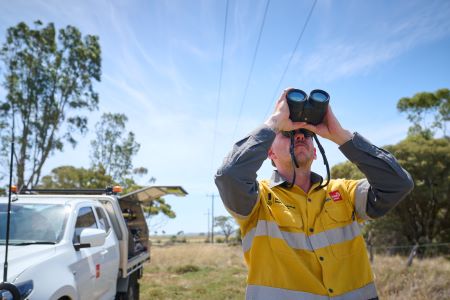Our poles are made from wood, concrete or steel and are designed for their location based on Australian standards.
The timber used for poles features natural textures that include splits in the wood and holes from knots. This means that some poles may look old or weathered. It is important to note that a pole’s aesthetic qualities do not necessarily impact on its strength.
Above and below ground inspection methods determine the condition of wooden poles, including the amount of sound wood, presence of rot or termites, the size and number of splits in the timber, height and diameter measurements.
Data from inspections is used to calculate each pole’s residual strength and safety factor. Based on this, the serviceability of the pole is assigned one of three classifications.
A new wood pole’s residual strength is well above its rated strength (2.5 times) and will typically reduce with age. We do not allow poles to deteriorate below their rated strength as they would not be considered strong enough to support infrastructure or withstand environmental factors such as high winds.
In 2021, we introduced a new digital management system to bring together in one place a full history of every pole in our network. The location, wood species, age, pole-top assets and inspection history as well as the results of aerial inspections by our helicopters are now captured in this system for every pole. This gives us even better information to work from in planning our annual asset management program.








